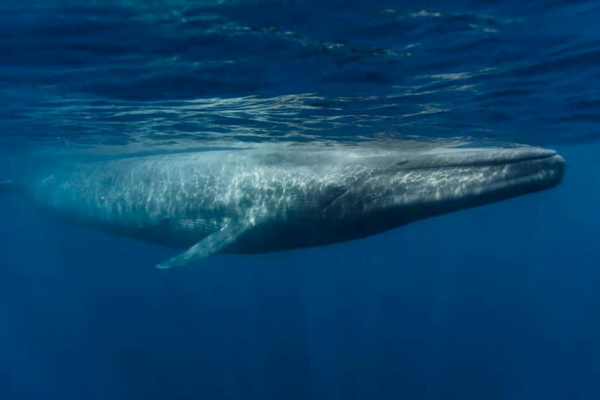Fin Whale (Balaenoptera physalus): Majesty and Risk of Extinction
If you are looking for detailed and comprehensive information on the fin whale (Balaenoptera physalus), one of the most impressive creatures in the seas, has come to the right place. In this article, we'll explore the life and characteristics of this magnificent marine specimen, discuss the risks it faces in relation to extinction and share statistics on its current population. In addition, we'll address the importance of preserving endangered species in general.
Introduction to Fin Whale
The fin whale, known scientifically as the Balaenoptera physalusis truly a wonder of the oceans. Part of the Balaenopteridae family, this species is often nicknamed the "queen of the seas" due to its imposing size and majestic presence. With an average length of between 20 and 26 meters, these colossal creatures are truly a spectacular sight.
Physical characteristics
Fin whales have a number of distinct physical characteristics that make them unique in the animal kingdom. Their coloring varies from dark grey to light brown, often with irregular spots along the body. A striking feature is its high dorsal fin, which can reach around 60 centimeters in height. This fin is often visible when the whale surfaces from the water, making it a useful identification feature.
Contents
Behavior and Food
In terms of behavior, fin whales are known for their agility and grace, despite their impressive size. They can be spotted in various parts of the oceans, migrating to feeding grounds during the warmer months and seeking warmer waters to breed during the cold months.
As for their diet, fin whales are opportunistic feeders, feeding mainly on krill, small fish and plankton. With such a varied diet, these whales play a vital role in maintaining the ecological balance of marine ecosystems.
Extraordinary Migrations
Fin whale migrations are truly remarkable and have fascinated scientists and nature observers for years. They travel thousands of kilometers on their seasonal journeys, often crossing vast oceans to reach their feeding grounds or breeding grounds. These migrations are an impressive testament to the determination and adaptation of these marine giants.
Extinction Risk and Current Population
However, despite their majesty and ecological importance, fin whales face a significant risk of extinction. Human activities, such as collisions with ships, accidental capture in fishing nets and habitat degradation, have put this species in danger. According to the most recent statistics, the fin whale population is estimated to be approximately 10,000 to 25,000 individuals all over the world.
Preservation of Endangered Species
The critical situation of fin whales highlights the importance of preserving endangered species in general. Our planet's biodiversity is a valuable treasure that we must protect and care for. Conservation efforts, education and awareness are essential to ensure that future generations can enjoy the diversity of life that our world offers.
Conclusion: Protecting Our Precious Biodiversity
In this article, we explore the impressive characteristics and fascinating behaviors of the fin whale (Balaenoptera physalus), while highlighting the imminent threat of extinction it faces. It is imperative that we take action to protect this majestic species and others that inhabit our oceans. Raising awareness, marine conservation and working together are essential to ensure that future generations can continue to admire and learn from these magnificent living beings.
Frequently Asked Questions about the Fin Whale
- What is the average size of a Fin Whale?
- Fin whales can reach an average size of around 20 to 25 meters in length.
- Where do Fin Whales usually migrate during the summer?
- During the summer, Fin Whales migrate to polar regions in search of abundant food.
- What do fin whales eat?
- Fin whales feed mainly on krill and small fish, using the filter-feeding technique.
- What are the Fin Whale's notable physical characteristics?
- The Fin Whale has a dorsal fin, folds in its throat for feeding and a hydrodynamic body.
- How do Fin Whales communicate with each other?
- Fin whales produce complex and mesmerizing songs for communication and reproduction.
- What is the life expectancy of a Fin Whale?
Studies indicate that Fin Whales can live for more than 90 years.
Fin whale - Marine Biology - InfoEscola
If you liked our article, leave a comment and thank you
Thanks for stopping by, check out our other work too
https://vettopbr.com/tosse-em-caes/







